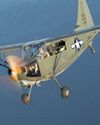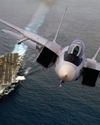Essayer OR - Gratuit
NOORDUYN NORSEMAN
Flight Journal
|September - October 2023
Canada's rugged, fabric-covered workhorse

As Noorduyn Norseman UC-64B 43-5112 turned final approach on August 26, 1944, pilot Albert Hill idled the 600-hp Pratt & Whitney R-1340 engine and felt the airframe shudder with flaps locked down. When the airplane's tires contacted the 2,300-foot soft soil air-strip at Fort Smith in Canada's Northwest Territories, airspeed indicated 100 mph. Three waiting truck drivers watched what they expected would be a routine rollout.
"As we had already thrown up a considerable amount of mud, I decided to go around again and attempt another landing," reported Hill to USAAF headquarters. "At this point, I applied full throttle; we managed to pull through the water in front of us and had almost become airborne when we struck a still larger and softer area. The speed of the aircraft by this time was 50 to 60 mph."
The truckers witnessed the Norseman's left wheel drop into a hole and abruptly pivot before thumping upside-down in a splash of mud-colored water. Hill had misjudged wind from laundry rippling beside a sheltered mess hall. No one that day likely knew that the prototype Norseman underwent a maiden flight on November 14, 1935, near Montreal, Quebec. Designed to handle the slams and bangs of wilderness, the first of 903 produced immediately went to work in Quebec hinterland. Prototype CF-AYO hauled cargo from cucumbers to perfumed prostitutes into mining or lumber camps; outbound, pilots rode wrapped in the rancid odors of baled furs and perspiration-soaked northern workers.

Cette histoire est tirée de l'édition September - October 2023 de Flight Journal.
Abonnez-vous à Magzter GOLD pour accéder à des milliers d'histoires premium sélectionnées et à plus de 9 000 magazines et journaux.
Déjà abonné ? Se connecter
PLUS D'HISTOIRES DE Flight Journal

Flight Journal
ELLIPTICAL ELEGANCE
Flying and evaluating the Seafire Mark III
4 mins
November - December 2025

Flight Journal
IRON DOG
Fighting the Pacific and the P-39 at the same time
14 mins
November - December 2025

Flight Journal
Fighter Pilots: A Warrior Clan
TAKE A HARD LOOK at the two young men in these photos. Do they look as if they were bent on killing one another? On the left we have a young, unknown enlisted Japanese pilot standing in front of a Nakajima Ki-27 \"Nate,\" one of Japan's earliest monoplanes that led to the much vaunted Zero.
3 mins
November - December 2025

Flight Journal
KEN WALSH THE FIRST CORSAIR ACE
Medal of Honor pilot's combat adventures
12 mins
November - December 2025

Flight Journal
Big Chief's Little Chief
Thunderbolt action with the Wolf Pack
11 mins
November - December 2025

Flight Journal
ENEMY PILOTS SPEAK Voices from the other side
All too often American students of air warfare forget that enemy aircraftwhether Messerschmitts or MiGs-were flown by human beings with the same motivations and traits as Allied airmen. More often than not, the only difference between friend and foe was the paint on the airplane and where they landed. Therefore, we've assembled a variety of accounts from WW II Axis fighter pilots, men who were more than simply targets.
11 mins
November - December 2025

Flight Journal
FLYING THE FW 190
A legend gets checked out in the Butcher Bird
15 mins
November - December 2025

Flight Journal
DOUBLE-THEATER ACE
The fearless missions of legendary fighter pilot Col. John D. Landers
12 mins
November - December 2025

Flight Journal
WARBUG IN THE PACIFIC
Surviving combat in a Stinson OY-1/L-5
10 mins
September - October 2025

Flight Journal
WINGS OF THE FLEET
Celebrating the U.S. Navy's 250-year legacy
9 mins
September - October 2025
Translate
Change font size

